Art Fairs
Spring 1883 Is the Enticing Boutique Fair Down Under
New kid on the block draws established collectors and new fairgoers alike.
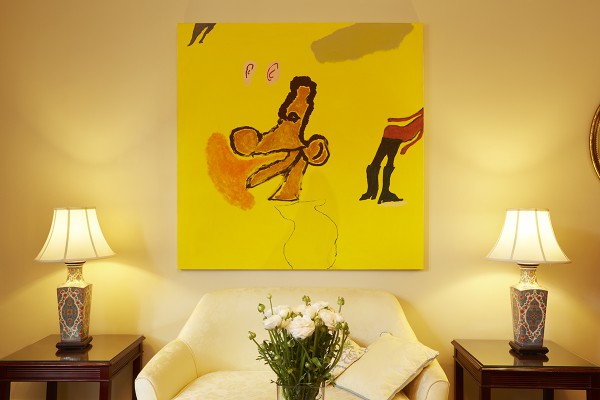
Photo: Zim Wemberly.
New kid on the block draws established collectors and new fairgoers alike.

Jane O'Sullivan

The Melbourne Art Fair might be the main game in town, but a new invitation-only art fair is drawing attention. Three Melbourne dealers, including Station Gallery’s Vasili Kaliman, have founded Spring 1883, which is taking place in a hotel near the main fair.
“We had a sense of the particular work we wanted to show and the particular galleries that we wanted to show in conjunction with,” Kaliman says about his initial discussions with the cofounders of the event: Geoff Newton, of Neon Parc, and Vikki McInnes of Sarah Scout Presents. “We instinctively felt there was a group of like-minded galleries who were probably after an alternate offering [to the Melbourne Art Fair].”
Spring 1883, which continues through August 17, includes 20 galleries from Australia, New Zealand, and New York.
In terms of the choice of venue, Kaliman likes to talk about how art is “activated” in new ways by being exhibited in domestic environments—although calling the Hotel Windsor “domestic” might be a little misleading. The hotel, which sits just across from the Parliament House and which was where the Australian Constitution was drafted in 1898, is a riot of Victoriana reinterpreted through the lens of a 1980s renovation.
Dealers have embraced the environment. Top of the class is the Auckland artist-run space Gloria Knight, where, in the corridor to the suite, Biljana Popovic has installed a series of yellow poles, supports, and handholds to create the interior of a bus or a tram. It completely transforms the experience of walking down the corridor.
New Zealand’s Hamish McKay Gallery has placed a Ronnie van Hout work in the bathtub, magnifying the sense of unease and discomfort tenfold. Fiona Abicare’s screens with mesh and tapestry at the Sarah Scout Suite also benefit from the setting.
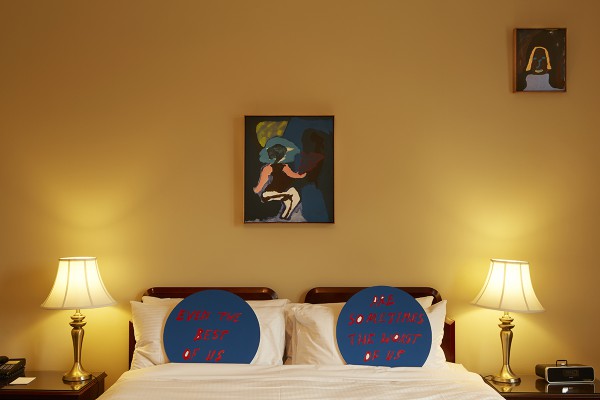
Installation view, Tom Polo, at Station Gallery.
Photo: Zan Wimberley.
Several dealers have made use of the beds in the hotel’s suites. A fabric piece by Justin Trendall is the bedspread in Sarah Cottier Gallery’s suite, for instance.
While the environment has its challenges, it creates an undeniable sense of adventure and discovery among fairgoers. They happily peer into corners and drawers and laugh with pleasure at unexpected placements. It isn’t uncommon to walk into a suite and strike up a conversation with strangers about a particular piece.
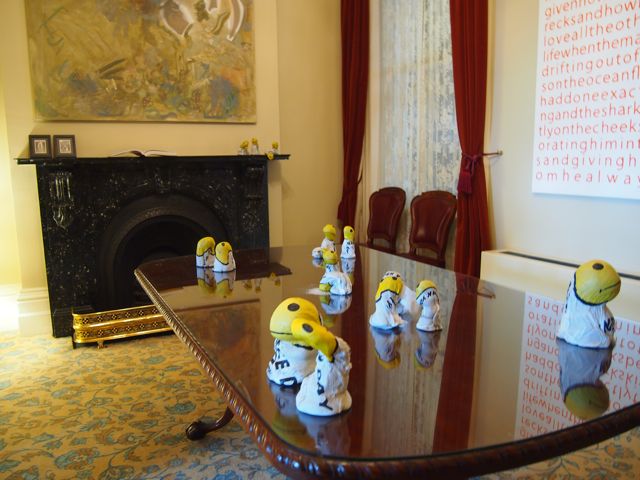
Installation view, Koji Ryui, at Sarah Cottier Gallery.
Many dealers have spoken about how the audience at the fair is a mix, with curators from several of the major state and national institutions stopping by, as well as a good number of established collectors. Most dealers express relief at not having to talk with the so-called tire-kickers who turn up at large events open to the public. Some have been coy about their success thus far, and it is evident that almost all of the work on exhibit is under AUD$10,000 and much of it is (conveniently) suitcase-sized.
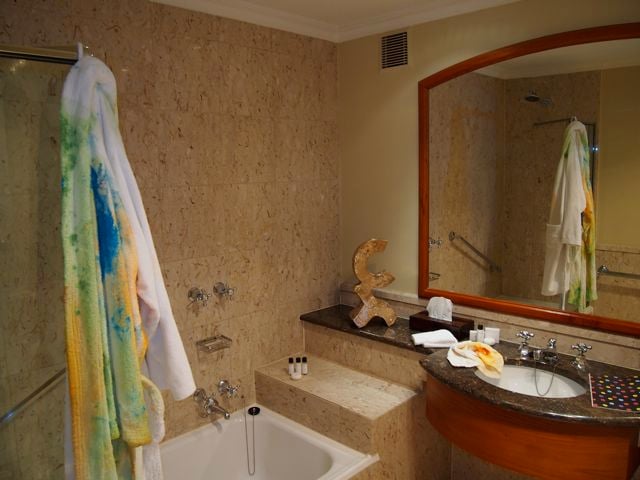
Installation view with robe and hand towel by Misha Hollenbach and sculpture by Caleb O’Shea, at Utopian Slumps.
Early on the first day, Kaliman reported that his gallery’s presentation of Tom Polo’s paintings had nearly sold out, with pieces ranging from AUD$1,200 to $5,800. And Melbourne’s Sutton Gallery reported sales with Jackson Slattery’s watercolors, now priced around the AUD$6,000 mark. Sutton also sold a painting by Stephen Black for AUD$7,700 and two by the (younger) artist Karen Black for AUD$4,200.
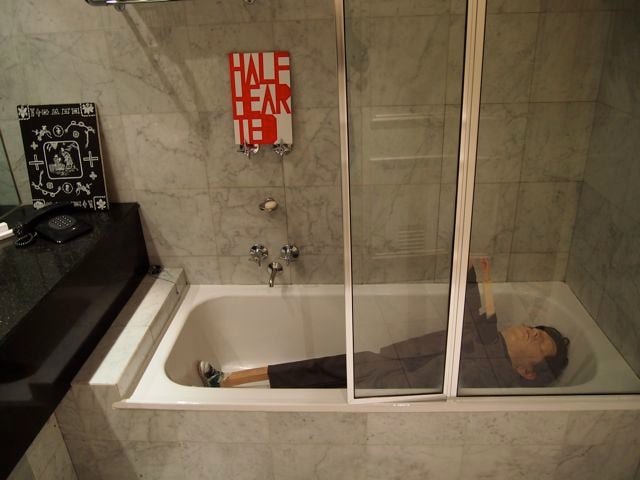
Installation view, Ronnie van Hout, at Hamish McKay.
Gallerist Irene Sutton dismissed the concerns of some dealers at the Melbourne Art Fair who think galleries like hers have an obligation to take part in the main event. Their argument is that this would make for a stronger Melbourne Art Fair while supporting the development of the Australian art market. The Melbourne Art Fair is also a nonprofit, they say, and the monies raised go towards activities undertaken by the Melbourne Art Foundation to support living artists.
“I haven’t gone to the Melbourne Art Fair in five years,” Sutton says. “I wouldn’t have gone anyway, and I suspect others are the same.”
Still, despite the extra costs and staffing logistics, some galleries have taken booths at both fairs. Among them are the Sydney-based galleries Roslyn Oxley9 and Darren Knight, and the Melbourne-based galleries Daine Singer and Utopian Slumps.
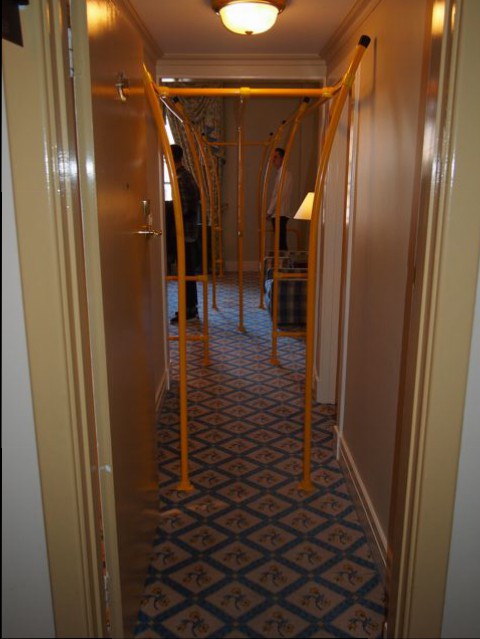
Installation view, Biljana Popovic, at Gloria Knight.
Cofounder Kaliman echoes Sutton, downplaying the idea of competition. “We don’t see this as a satellite fair, we just wanted to do our own thing . . . that represents a particular ecosystem of galleries,” he says.
Whether there is a future for the new initiative remains unknown, particularly given that the three cofounders all have their own galleries to run. But Kaliman is optimistic that it will run again in two years. “The response we’ve had so far is that artists love showing in this sort of environment,” he says.

Installation view, Tom Polo, at Station Gallery.
Photo: Zan Wimberley.